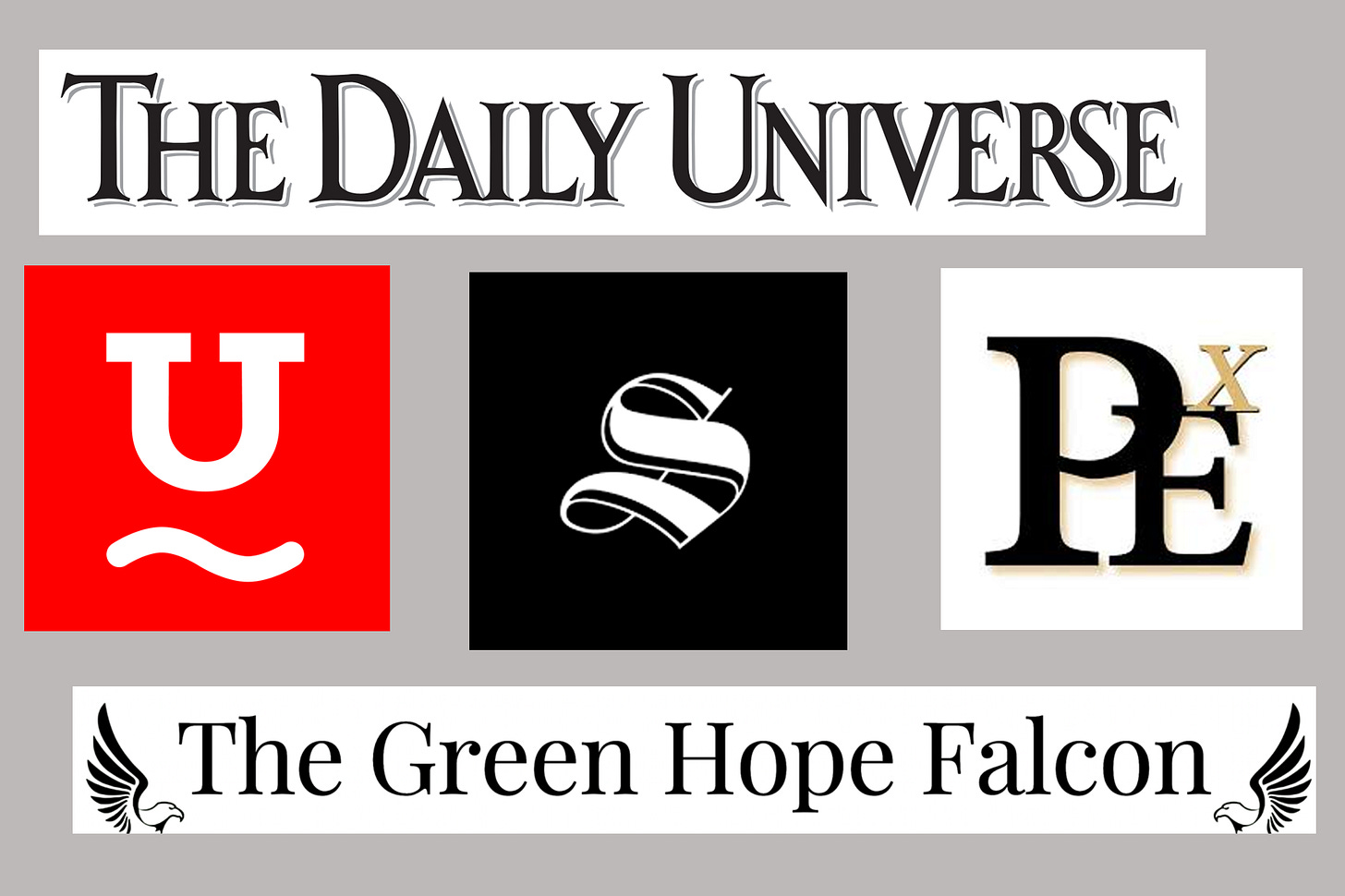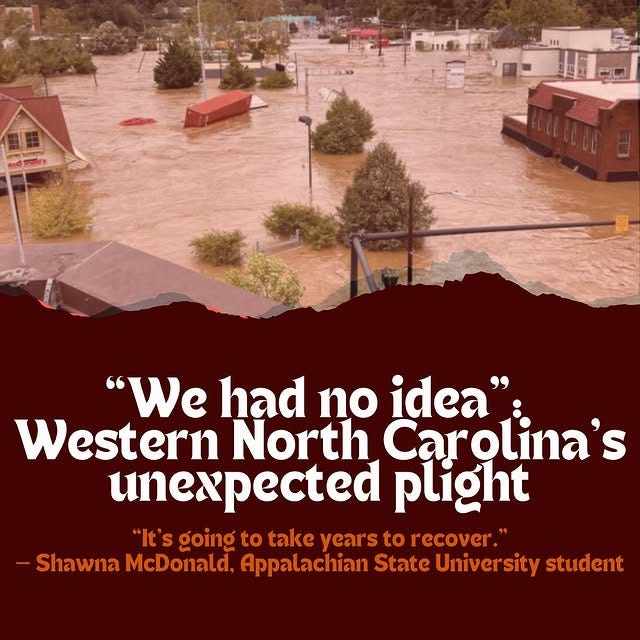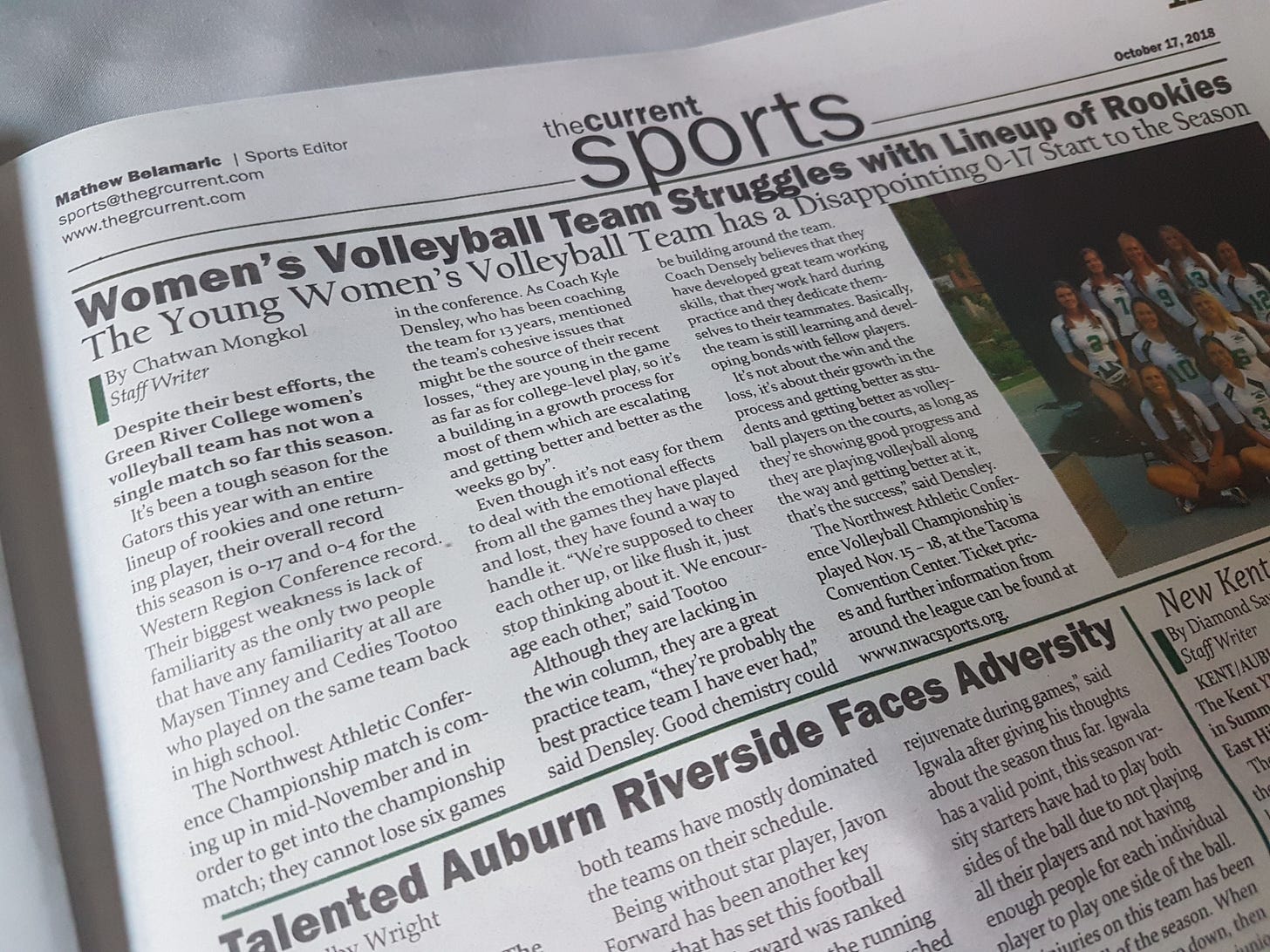Five lesser-known student newspapers that shine in 2024
How student journalists rose to the challenges of the year

Amid a year of protests, climate disasters and an increasingly turbulent media landscape, 2024 was a defining year for the student press — even before the presidential election.
When legacy media limited its narrative to “the kids just don’t understand” during the protests, the student press stepped up to provide on-the-ground coverage.
Columbia University student journalists published extensive news reports and op-eds detailing the movement. The Berkley Beacon reported on Emerson College students' clashes with university admin and brutalization by police. Reporters from The Dartmouth were even arrested during the coverage.
These incidents are flashes in the pan — rare moments where the broader public becomes aware of the daily work these journalists do to keep their communities informed.
But outside schools with longstanding publications and prestigious journalism programs, other student outlets stepped up, too.
And it isn’t an easy task.
During my final months at Plymouth State University, the newspaper I revived and served as editor-in-chief, The Clock, faced frivolous lawsuits meant to scare us away from our reporting on the student government — and we were not even getting the worst of it.
We were unpaid, underfunded and under constant pressure to skew our coverage into glorified marketing material. But we were not unique in that respect.
As we move into a new semester, a new year and a new(ish) presidency, here are five lesser-known publications nationwide that impressed me in 2024 and should be on your radar in 2025.
The Daily Universe – Brigham Young University
After covering an abortion-rights rally in October, reporters at Brigham Young University’s Universe had to grapple with rapid online criticism, including a call from a U.S. senator to take it down.
The Universe’s fellow student publication, The Cougar Chronicle, an “independent conservative news and opinion” outlet, posted “And here we have the official BYU student-run publication referring to murdering babies as ‘reproductive care.’”
One user shared on X, “Not a good sign when the university’s newspaper is openly opposing a recent statement put out by the first presidency.”
Republican Sen. Mike Lee joined the discourse demanding BYU take the article down, despite BYU calling the alumni a “tireless advocate for our founding constitutional principles.”
The newspaper has neither commented nor taken down the article.
Across the board, The Universe is responsible for solid reporting on Utah state politics. Still, given its place as part of a private, non-secular university, it lacks certain protections under the First Amendment.
Nevertheless, they took on an important story, covered it well and stood by their reporting in the face of massive scrutiny from members of the Church of Jesus Christ of Latter-day Saints.
Undercurrents — Claremont Colleges
Undercurrents is a different kind of publication. It covers grassroots organizing throughout the five colleges located in Claremont, California.
As student organizers nationwide are met with more scrutiny every year, its reporting stands alongside the picket line.
The news outlet has provided integral muckraking and fact-checking in support of ongoing boycotts, divestment and sanction movements across the five colleges, and they’re really good at it.
For example, in an article published after the Board of Trustees chairs made claims about the complexity of the colleges’ aerospace manufacturer investments, Undercurrents staff produced an article that functions as an effective database of Boeing’s weapons manufacturing.
Its reporting hasn’t been without retaliation from administrators.
In October, Pamona College brought charges against Undercurrents in what staff called “an unprecedented act of retaliation against our reporting, (that carries) the threat of sanctions including club suspension or funding elimination.”
“We will not be intimidated. We will defend our principles, and the necessity and righteousness of our work, as we engage with the disciplinary procedure,” said a coalition of editors from Undercurrents and other student publications at the colleges in an op-ed.
Undercurrents provide a dedicated voice to report on and in support of student organizing in a capacity that traditional outlets cannot.
With a second Trump administration coming into office, the newsroom will certainly be in for a busy new year — one worth keeping an eye on at that.
The Green Hope Falcon – Green Hope High School
When North Carolina was blindsided by Hurricane Helene, Green Hope High School’s journalists added making sense of the hitherto impossible natural disaster to its already busy curriculum.
Less than a week after the hurricane hit, Green Hope reporters interviewed local college students for first-hand accounts of the devastation while also explaining how such an event happened.
Where they exceeded in their coverage was the broader narratives around the hurricane they wrote about.
Senior Rhea Kakde covered a local trunk-or-treat event for children who Helene would have otherwise made Halloween impossible. Her coverage is everything you’d want to see from a high school from a high school paper in a way that is nothing less than inspiring.
In addition to their hurricane coverage, they tackle local news and frequently publish thoughtful pieces on broader issues.
In another of Kakde’s pieces, she publicizes Buffalo Wild Wings’ use of beef tallow in their cooking and the reactions of religious students whose faith would prohibit such consumption.
Kakde’s report describes why this is problematic, reveals reactions from Hindu and Muslim students and even provides a nice graphic pointing out which menu items to avoid.
Having high school journalism programs is so important to training the next generation of writers and expanding their communities’ news diet. The Green Hope Falcon is living proof of why.
For any college newsroom looking to do some scouting, the students of Green Hope should be on your radar.
The Purdue Exponent — Purdue University
One of democracy’s limits is that you cannot make your voice heard if you cannot access the polls.
At Purdue University, students found themselves without the dedicated polling facility their campus had historically hosted — because of its alleged failure to meet the qualifications.
The Exponent’s reporting was able to spark enough outcry to make the university open an early voting facility on campus. While it was nowhere near the scale required and was only open during times when classes were in session, it was a victory for The Exponent and the broader Purdue community.
The headlines around this story are also really good. They are blunt and, succinct, and allow even the non-readers out there to understand the story exactly how a good headline should.
“Students can’t vote on campus” and “Purdue hosts only voting location while classes in session” have the kind of no-nonsense attitude that you simply love to see.
The Sunflower — Wichita State University
It is not every day that the president of the university is met with credible allegations of plagiarism.
When the Kansas Reflector reported that Wichita State University President Richard Muma plagiarized “the majority of entire pages” of his dissertation, The Sunflower responded with comprehensive, balanced follow-up stories.
They explored the allegations from multiple angles without sensationalizing or downplaying the issue.
The coverage included an analysis of the university’s plagiarism policy, with interviews with community members and administrators discussing what constitutes plagiarism, how decisions are made and how a potential scandal is viewed across departments.
Covering this kind of story can be intimidating for a student just starting out.
But The Sunflower’s reporting really shines because it worked in channels even a local publication would not have access to, providing crucial insight into how the campus community reacts under pressure.
Jacob Downey is the former editor-in-chief of The Clock, Plymouth State University’s award-winning student newspaper. He currently freelances throughout the greater Boston metro area.
Chatwan Mongkol edited and contributed to this report and curated the sections below.
💬 Tell me how The Nutgraf can improve in 2025. Take this five-minute survey and share your thoughts, please!
✈️ Extra! Extra!
I just came back from a two-week trip on the West Coast. I stopped at Green River College in Auburn, Washington, feeling nostalgic because that was where my first story was published in a student newspaper.
I was a sports writer, believe it or not.
Story Spotlight:
🚨 Among journalists being arrested or detained this year, 21% were students, according to the U.S. Press Freedom Tracker.
🔮 The Intercept’s Chief Strategy Officer Sumi Aggarwal, in her Nieman Lab’s 2025 predictions, wrote, “I believe student journalists are an untapped resource — one that more newsrooms would be wise to partner with.”
🎉 The Nation called 2024 “a stunning year for student journalism,” highlighting 20 of the best articles from the year to highlight the reporting of the next generation.
💸 The staff of The Daily Trojan, the West Coast’s last daily print student newspaper, will no longer be paid while its print edition is cut to three times a week, editors wrote.
📰 Norwich University’s student newspaper in Vermont has resumed reporting and publishing for the first time since administrators suspended it earlier this year, VT Digger reported.
📢 In a bold editorial, The Voice at the Commonwealth University of Pennsylvania called on its university president to resign due to the ongoing decline of the university post-merger. “Very rarely do we insert ourselves into the stories we tell. But there are moments in time when the need is so great and the solution so clear, that we must join in.”
Featured Opportunities:
IJNotebook is looking for pitches on student culture and TikTok’s role in their lives. Submit before Jan. 6.
The Trace, a gun violence-focused newsroom, accepts applications for its editing fellowship until Jan. 9.
The Scripps Howard Fund and the Institute for Nonprofit News are offering 13 paid internships to journalism students in 2025. Deadlines are Jan. 10 and Jan. 31.
The KMUW Korva Coleman Internship in Wichita for summer 2025 accepts applications until Jan. 10.
The Chronicle of Higher Education is seeking reporting fellows. Applications will be reviewed beginning Jan. 15.
Applications for the POLITICO Journalism Institute are open until Jan. 21.
The Hearst Journalism Fellowship’s applications are due Jan. 6.
The National Press Club has multiple scholarships for students with a deadline of March 16.










